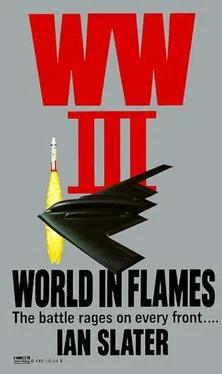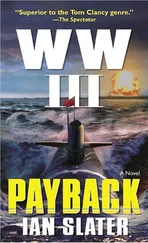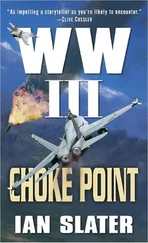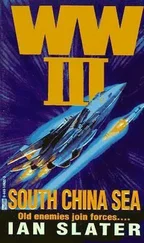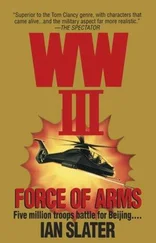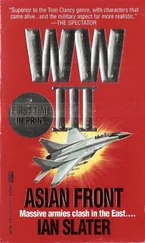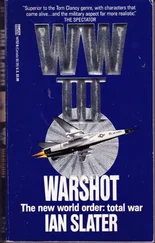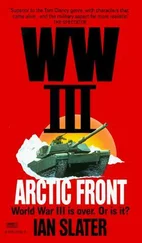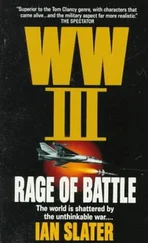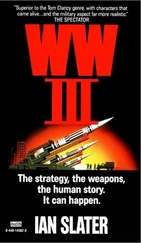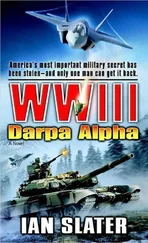“How’d he know they were gonna call him?” asked Sayers.
“Don’t ask me, man,” replied his checker. “Sixth sense. Sub captain’s got to have it, I hear.”
“Bullshit! No way he could’ve—”
“Hey, man — watch it. You missed a step. Back up in the sequence.”
As Brentwood entered Control, he was told by Zeldman they had a contact.
“Hostile?” asked Brentwood, catching his breath.
“Too far away as yet,” answered Zeldman. “The estimate is fifty-five thousand yards. About thirty miles.”
Brentwood had always made it a habit to be overly conservative when it came to estimates of contact distances, and decided to act as if the approaching submarine — as it certainly couldn’t be a surface vessel — was closer to them.
“What’s your guesstimate, Link?” Brentwood asked the other sonarman.
“Well, sir, it’s a bit fuzzy, but that may be because some of our sensors were ruptured during the Alfa attack. But it’s definitely coming towards—”
“He’s gone,” said Emerson. “Shut down his active.”
All eyes in Control were on the monitor panels. Brentwood seemed as alarmed now as he had been excited when he entered Control.
“Very well,” he said, the phrase, and his tone, gathering them all together. He gave orders for the emergency props to be extended from the belly of the sub. If they couldn’t rise, they could at least turn Roosevelt to face the last-known bearing of the sonar contact, and try to defend head-on, rather than sitting like a sunken log, offering their flank. Next, he ordered all torpedo tubes loaded, advising the torpedo officer to be ready for “snapshot two, one,” or informing him, as they were under possible attack, they might have to get a quick return shot away within forty seconds. During this time the torpedo crew would have to flood the tubes, open their caps, and maintain tandem communication with the Mark-118 firing control system.
“Either way, torpedo room,” Brentwood advised, “I want you to load one SA tube, one PA tube, with short-range contact fuse fish.”
“One tube starboard abaft with contact fish, one port abaft with contact fish,” came the confirmation. “Short-range fuse.”
“Man battle stations missile,” ordered Brentwood, standing by the raised podium of the control room’s attack center, his arms folded, the small of his back touching the brass rail that girded the search and the attack periscopes’ housing. “Set condition one SQ.” They were now on highest alert.
“Set condition one SQ. Aye aye, sir,” repeated Zeldman, and upon seeing the various departments punching in “ready,” he confirmed, “condition one SQ all set.”
“Very well,” answered Brentwood. “Neutral trim.”
“In neutral trim now, sir.”
“Very well. Prepare to spin.” Several men in Control looked across at each other in alarm. “Stand by to flood tubes two, three, and four,” ordered Brentwood, and they could hear the faint rushing of water filling the torpedo tubes. Tube one already contained the Mark-48 with contact fuse, the remaining three torpedoes now sliding forward from their rail-tracked dollies into the tubes, assuring that Roosevelt was now ready to fire at any enemy sub — if that’s what the contact had been — which might try to run interference with the missile launch.
Inside Missile Control, the weapons officer was waiting anxiously for the order to complete “spin-up,” entering the local orientating corrections into the missiles’ computers so as to assure the best possible trajectories for the MARVed— maneuvering reentry vehicle — warheads. But as yet no targets had been given. Given their present location, there were any number Brentwood could choose under the U.S. policy of “counter force,” that is, against military targets only, and not cities. It wasn’t as if Brentwood didn’t have enough to choose from; in fact, the nearest and most worthwhile targets would be the forty high-priority military bases clustered along the Kola Peninsula, but still the designation of targets had not come, and instead Brentwood requested “missile status report.”
“Sir, the spin-up’s not complete.”
“Do as I say!” snapped Brentwood. “Prepare missiles for launch.”
“Yes, sir. Preparing missiles for launch.”
“Very well. Prepare for ripple fire.”
“Yes, sir. Prepare for ripple fire.”
All over the ship, men were moving to their firing positions within two seconds of the operator squeezing the yellow handle and the soft but persistent musical gong sounding, the ripple firing sequence they were readying for one that would eject missile six first, then missile one. This staggered sequence would offset starboard and port yawing when water would rush into the four-storied missile tubes after each 114,000-pound missile had passed through its blue asbestos phenolic dome. The dome would shatter first, its symmetrical destruction being achieved by small explosive charges under each dome a split second before the steam pressure expelled whichever missiles Brentwood would select.
“Sir,” said Peter Zeldman, “we have no radio message to launch. Have you reason for ‘independent authority to launch’?” It was the first and, as it would turn out, the last time Peter Zeldman would ever question an order by Robert Brentwood.
“Don’t worry, Mr. Zeldman,” Brentwood said, so all of Control could hear. “The missiles I select will not have their warheads armed.”
Zeldman exchanged a quick glance with the chief. Was Brentwood cracking up?
Like Zeldman and others, the weapons officer looked worried, too, and it wasn’t missed by his assistant, who, with wire trailing from his headphones, was moving back and forth, head bent like a priest at prayer, along the narrow “Blood Alley,” the redded-out corridor of high computer banks, where he checked out each missile’s status, verifying for the weapons officer that each of the six Trident D-5 missiles was ready to pass through its four prelaunch modes.
“Missiles ready,” the weapons officer confirmed to Control.
“Very well,” said Brentwood. “Prepare for ripple fire.”
While the weapons officer, his forehead beaded with perspiration, waited for the designation of targets, in Control, Robert Brentwood, double-checking the computer screens that all missiles were, as he’d just been told verbally, ready for launch, held his key ready to click into the Mark-98 missile firing control system, the weapons officer waiting below, his black flexihose trailing snakelike behind him from the plastic red firing grip in his hand. His thumb was now on the transparent protector cap, ready to flip it up and depress the red button— six times in rapid succession — the moment Brentwood gave him the order.
“The ice!” It was a hoarse whisper from the blood-colored face of the assistant weapons officer. “If we fire—”
“Weapons officer,” called Brentwood, his voice calm, resolute.
“Weapons officer. Sir?”
“Disarm missiles one and six. Stand by.”
The weapons officer hesitated, but only for a moment. “Disarm missiles one and six. Yes, sir. Missiles disarmed.”
“Very well. Stand by.”
“What the hell—” began the assistant WO.
“Be quiet!” said the WO.
Brentwood turned toward Emerson. “Sonar — any further contact?”
“No, sir.”
Brentwood knew that if it was a hostile, it would be in torpedo range within thirty minutes. In that moment he envied his brothers and sister, far away somewhere on dry land, solid ground beneath their feet.
* * *
High over the English Channel beneath the heavy throb of three Combat Talon IIIs, the fast upgraded versions of the Hercules, carrying the SAS’s Sabre squadron to its mission, the occasional flashes of blue forked lightning illuminated the SAS troopers’ blackened faces and their cold-weather khaki/ green/white winter combat uniforms. The all-white SPETS overlays were to be used only after the attack, for as the RSM had no need to point out, the overlays would be dead giveaways “if they turn on the searchlights and fire parachute flares.”
Читать дальше
